Book reviews
Book reviews
Wombat Books
By on
Book title: Clara Capybara by Aleesah Darlison and Ruth-Mary Smith
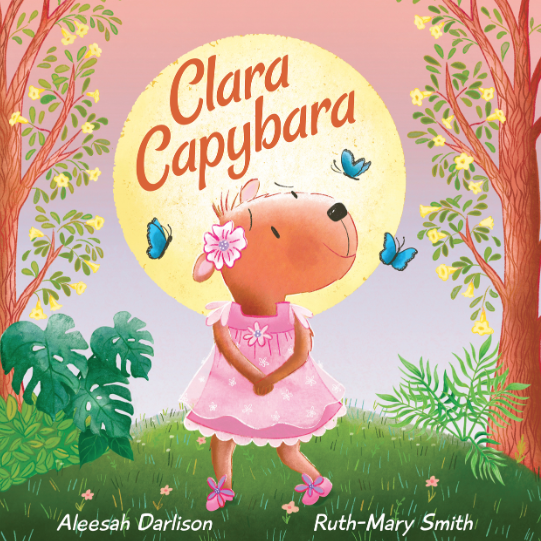
Reviewer: Neen Ramos
This story’s premise is instantly relatable. Clara Capybara is always a reliable helper for everyone. She is the most considerate cavy, helping tie shoelaces, carrying gift boxes, and cleaning up after her friends, always quick with another ‘yes’. It makes her popular, but it also leaves her drained. Eventually, Clara has nothing left to give, and Mama steps in to remind her that kindness isn’t only about helping others – it has to include yourself as well.
Many children know what it’s like to want to please, and many adults will recognise themselves in Clara too. The tone never scolds her for being helpful. Instead, it shows that boundaries can be kind. When Clara finally says ‘no’, it isn’t framed as rejection but as self-care, and that subtle difference makes the book reassuring rather than heavy-handed.
Smith’s illustrations lift the story further. The capybaras are soft, rounded, and expressive, their eyes conveying a lot of emotion without needing much text. The rainforest backdrops are rich but not overwhelming, with vibrant shades of green and yellow that make the pages feel alive. The inclusion of native flora, such as tibouchina and golden trumpet, also adds an extra layer for readers who notice these details.
Darlison plays with synonyms and alliteration, giving the text a rhythm that works aloud while slipping in small language lessons. The story also lends itself to classroom use, with opportunities for discussion, role-play, or simple activities that help children think about self-care and friendship.
Wombat Books lists this title as a picture book for readers up to 7 years. That age band feels right: the text is accessible for preschoolers, while the themes of boundaries and self-care will make most sense to children in the early years of primary school. Clara’s friends accept her first ‘no’ without hesitation, which feels tidy. This neatness works for younger readers, though some older children may notice that things don’t always go so smoothly in real life.
Clara Capybara is a gentle story with wide appeal. Its strength lies in showing that kindness and boundaries can exist together, which is a lesson children don’t often see modelled so clearly. The illustrations are warm, the text is engaging. Even if the resolution feels a little too smooth, the book opens the right kind of conversations.
Loved reading about Clara Capybara? Imagine the impact of helping a child discover their first favourite book.
By supporting Booktober, you’re helping the next generation in Western Sydney and regional NSW find their voice - and maybe even write the books you’ll be reading in the future.
Donate today at booktober.org.au/donate
Or Support a Bookworm like Neen at booktober.org.au/users/neen-ramos
Reviewer’s bio:

Neen Ramos is an emerging poet residing on Dharug land. Her body of work explores the complexities of the immigrant experience. With a background in marketing, Neen brings a thoughtful and layered approach to storytelling, weaving themes of resilience, displacement, and belonging into her poetry and creative nonfiction. Her writing invites readers to reflect on the nuances of language, the quiet sacrifices of migration, and the vibrant yet bittersweet ties to home. She is currently developing a poetry collection, gods of the margins, which navigates the liminal spaces of cultural identity, colonial inheritance, and the act of becoming in a new land. Through this work, she explores what it means to write from the edges—linguistically, politically, and emotionally—while reclaiming space and voice.
Book title: Juniper’s Painting by Catherine Bauer and Jennifer Horn
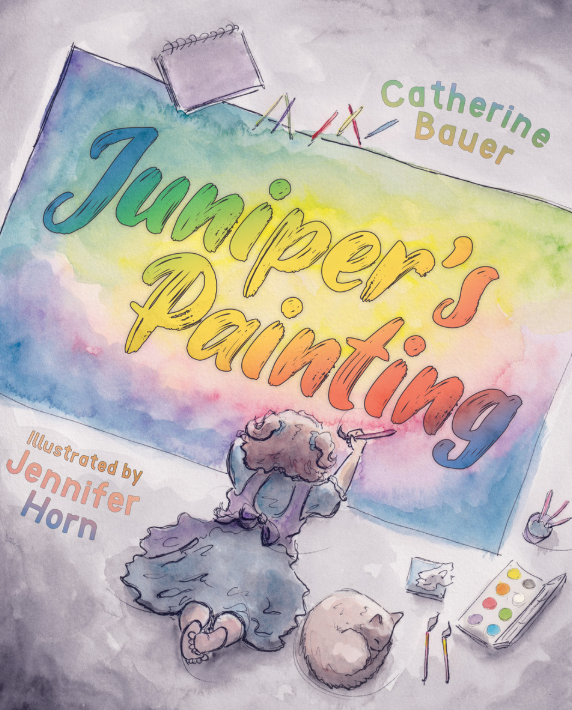
Reviewer: Garth Thomas
Juniper’s Painting is a delightful picture book for under-10-year-olds. But there’s plenty of charm for the parents or guardians as they share it aloud with their child. Juniper’s Painting tells of a little girl, named Juniper, who’s stranded and bored inside her beachside home during a big storm. It’s the beginning of autumn; the rain is pouring, the wind is howling and venturing outdoors is out of the question. Juniper’s mum (a modern working mum who slaves over a laptop) is too busy to play. Juniper must learn to amuse herself and, in the process, creates a painting of the beach as she wishes it to be. It’s a pivotal moment in the book; this is where the colours really sing and brightness bursts from the page. Juniper’s imagination brings colour to her world and to the story itself, proving that it’s not just about what you look at, but how you choose to look at it as well. Juniper finds peace and fulfilment in her art, a valuable lesson every artist should learn, but more broadly it’s about the power of mind over matter. Eventually, the storm does lift and Juniper makes it to the beach. Even her overworked mum comes along to relish the sunshine!
Catherine Bauer’s text is simple, but lyrical. There’s a pleasing rhythm to it when read out aloud; the descriptions are poetic and engaging. She uses some intriguing words for the young reader/listener that will no doubt expand their vocabulary: ‘splodged’, ‘splintered’ and ‘grubby-grey’. And there are metaphors to be had: ‘Rain clouds swallowed the sun’ and ‘the wind and rain had chased the summer away’. There are also plenty of ‘hooks’ to provoke conversation during any bedtime story session: Why can’t parents always give children full attention? Why is it good to develop self-sufficiency and independence? How do you adapt to circumstances not of your own choosing? And how can imagination save the day when reality disappoints you?
Another pleasing aspect of the book is that it doesn’t ‘talk down’ or ‘belittle’ our child heroine. We see Juniper’s world through Juniper’s eyes; she makes a ‘blanket cave’, drinks ‘tea’ from a toy tea set and puts teddy to bed when he’s ‘tired’ – all juvenile fantasy, but still relatable to a young reader/listener. At the same time, we’re also gently nudged to see things from her mum’s point of view (i.e.: Mum has to do work, Mum has other responsibilities); this prompts the young reader/listener to understand things from the parent’s viewpoint and that the world can’t revolve around children all the time.
Jennifer Horn’s illustrations are gorgeous. They’re executed in what appears to be ink and water colour, utilising bright daubs of pigment to contrast the dark smudge of the storm. It’s an effective use of palette and lends itself to the storytelling. The characters are also beautifully realised and drawn with whimsy. The eye for detail is thoughtful and nuanced; the more you look at the pictures, the more you see. It’s an impressive tour de force in book illustration. Would highly recommended for young and old alike.
Loved reading about Juniper’s Painting? Imagine the impact of helping a child discover their first favourite book.
By supporting Booktober, you’re helping the next generation in Western Sydney and regional NSW find their voice - and maybe even write the books you’ll be reading in the future.
Donate today at booktober.org.au/donate
Or Support a Bookworm like Garth at booktober.org.au/users/garth-thomas
Reviewer’s bio:
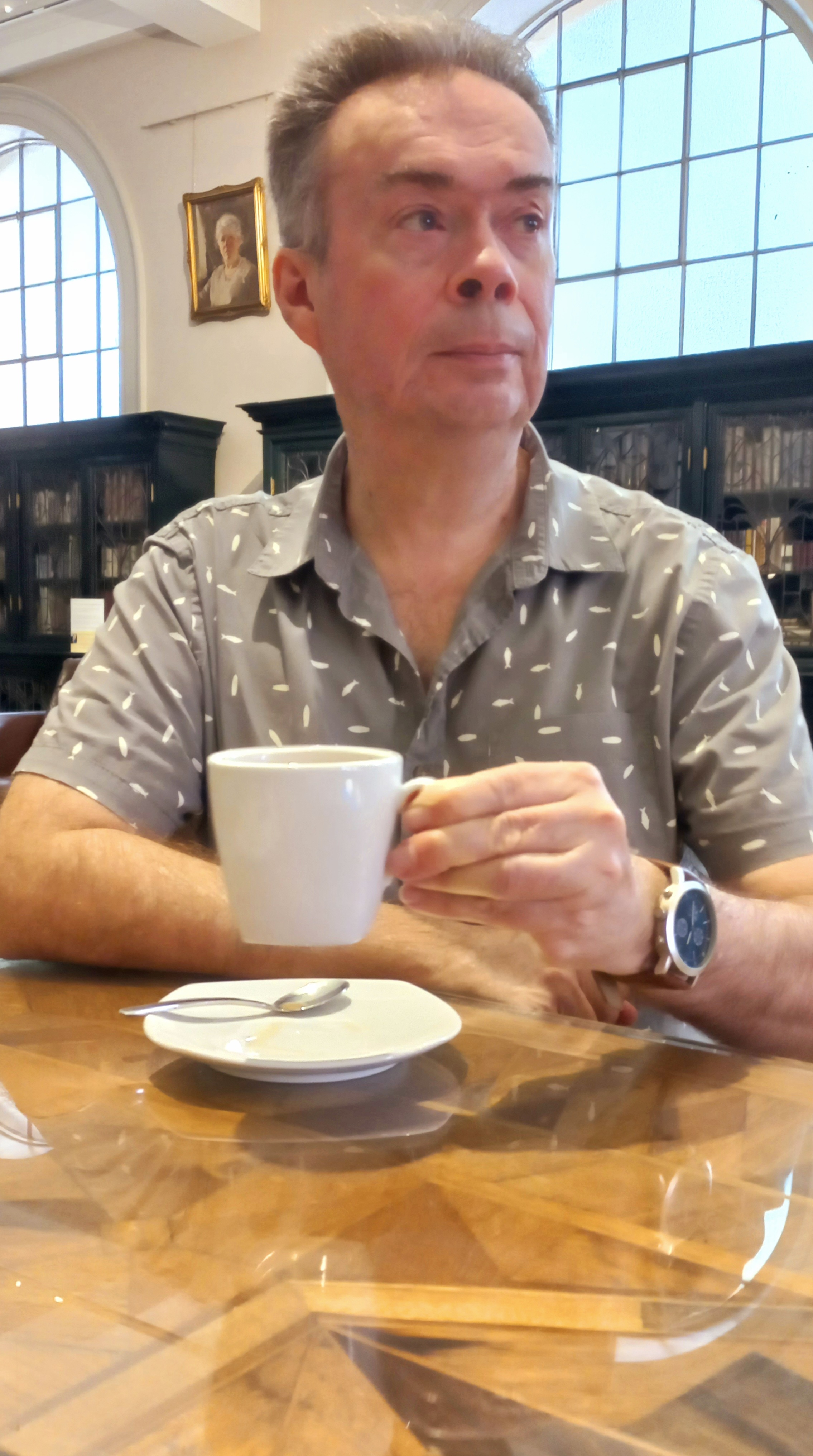
Garth Thomas spent 35 years at the Australian Broadcasting Corporation editing for the programs The 7.30 Report, Lateline, Australian Story and Foreign Correspondent (winning an Ellie Award in the documentary category), but now in retirement wants to tell his own stories. Garth completed the Year of the Novel course at Writing NSW in 2023. He was praised for his ‘clear, strong narrative voice’, ‘vivid characters’ and ‘sharp, clear, inviting prose’. His thoughtful remembrance True Drug, True Story appeared in the online magazine Ink. He is also a member of a regular writing group who meet to discuss all things writing and reading, as well as tapping out some new paragraphs. In 2025, Garth was inducted into the WestWords Academy Program. His short story, The Oort Cloud won a Highly Commended prize in the Living Stories competition and was published in the anthology Only I Can Say. The judges described his work as ‘humorous, contemplative and emotionally resonant’. Garth continues to develop his writing craft, penning novel manuscripts and short stories while enjoying the camaraderie that WestWords encourages and provides.
Book title: Flute: A Dolphin’s Wild Journey Home by Kasey Whitelaw and Jenni Goodman
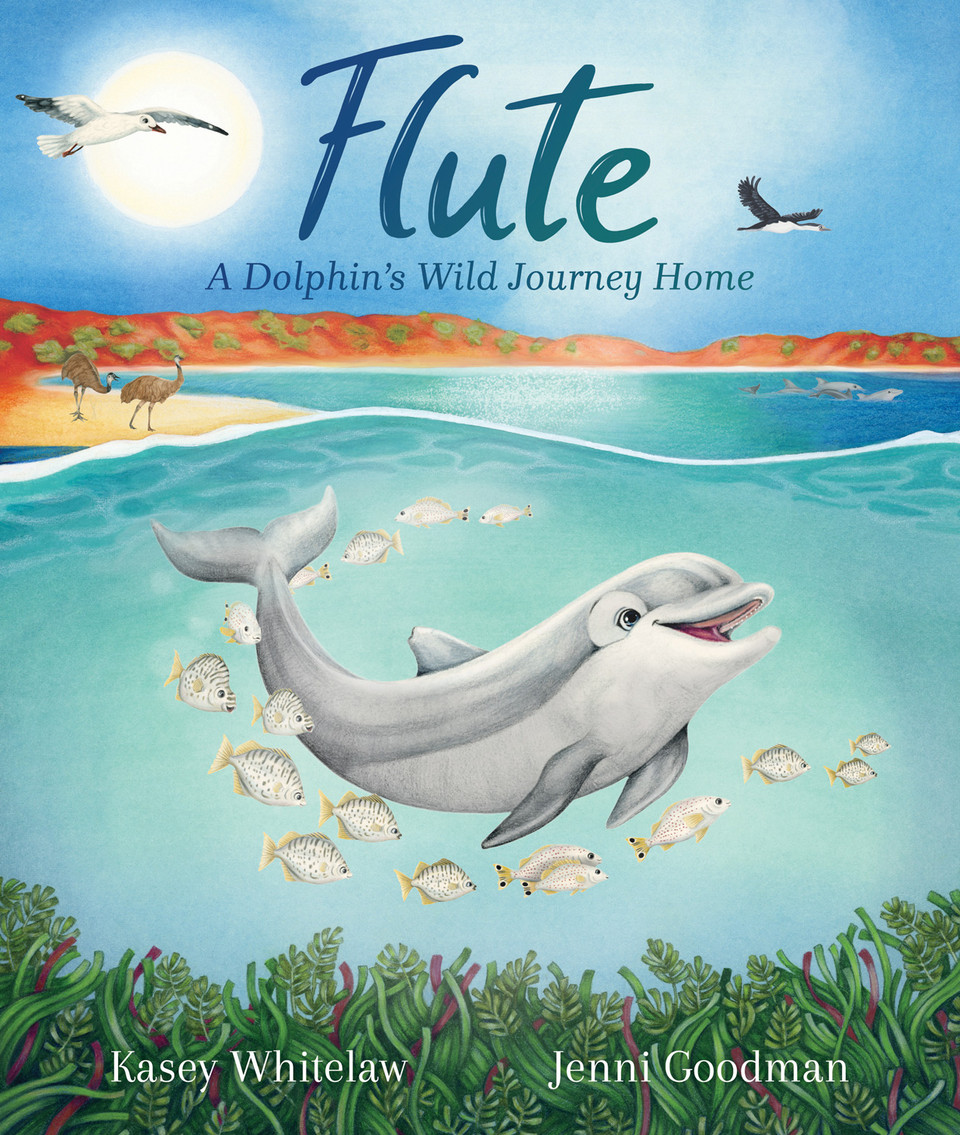
Reviewer: Magda Cawthorne
Flute: A Dolphin’s Wild Journey Home is a luminous blend of storytelling and science that takes readers beneath the turquoise waters of Monkey Mia, Western Australia. Written by marine biologist Kasey Whitelaw and beautifully illustrated by Jenni Goodman, this 32-page picture book introduces young readers to the wonder—and fragility—of Australia’s marine world.
Flute is a young bottlenose dolphin who begins life in a peaceful ocean home before being separated from her family by a passing boat. Her journey to find her way back becomes both a thrilling adventure and a gentle warning about the impact of human activity on marine creatures.
Its pages burst with visual richness. Its illustrations showcase the marine plants, animals, and birds of Shark Bay—galahs, emus, thorny devils, water snakes and a dazzling array of fish in every colour and shape. The endpapers feature 35 illustrations to help identify the names of the creatures in the drawings, and a map of the Monkey Mia region, grounding the story in a real and remarkable place.
Whitelaw’s background as a marine biologist brings authenticity, while Goodman’s artwork is bright and expressive, capturing the joy, curiosity and vulnerability of life under the sea. The result is both educational and engaging—a book that invites children to care deeply about the natural world.
Flute is ideal for exploring Australian wildlife or ocean habitats, or simply for families who love stories that combine science, adventure and Australian marine life.
Loved reading about Flute: A Dolphin’s Wild Journey Home? Imagine the impact of helping a child discover their first favourite book.
By supporting Booktober, you’re helping the next generation in Western Sydney and regional NSW find their voice - and maybe even write the books you’ll be reading in the future.
Donate today at www.booktober.org.au/donate
Or Support a Bookworm like Magda at booktober.org.au/users/magda-cawthorne
Reviewer’s bio:
Magda Cawthorne is the author and photographer of two editions of Hidden History of the Blue Mountains. Her books reflect a fascination with the stories behind familiar places and the lives of those who came before us.
Raised in country New South Wales by first-generation migrant parents, Magda developed an early curiosity about the cultural layers that shape — and continue to shape — Australian local histories.
She is now working on a new photographic storybook about the Sunshine Coast in Queensland, alongside a contemporary novel set in a small New South Wales town in the near future. A passionate advocate for emerging writers, Australian authors, and independent publishing, Magda continues to champion diverse voices and the value of storytelling.
Book title: Harper Wells: Renegade Timeline Officer by Bethany Loveridge
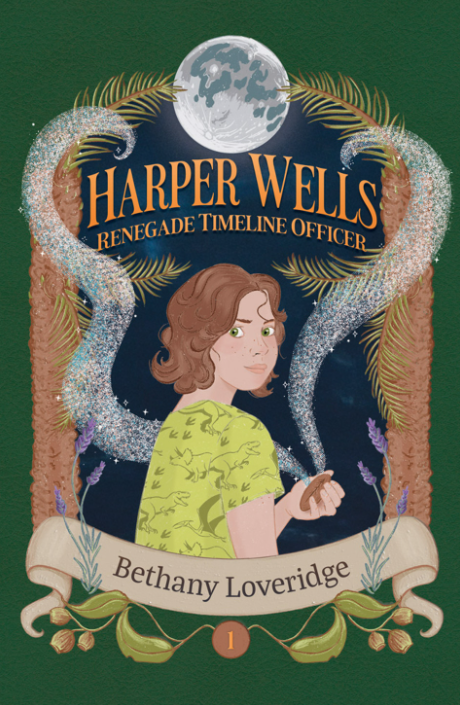
Reviewer: Lana Graham
Harper Wells: Renegade Timeline Officer is the first in the Wollemi trilogy of time-travel books by Bethany Loveridge. Harper Wells, or “Harrie,” as her friends call her, is a headstrong twelve-year-old who lives with her dad and annoying older brother Morris. When Harper chooses an old yet beautiful solid-wood Wollemi bed from the op-shop, she doesn’t realise it's a time-travelling bed.
On her first night sleeping in the Wollemi bed, Harper is sent back in time, where she meets seven-year-old Edie, who happens to be the famous Australian social worker, politician, and feminist Edith Cowan.
But stranger things are growing on Harper’s time-travel adventures. She learns that there are Timeline Officers, Scripts to follow, and that she has already broken quite a few time-travel rules!
When Harper tries to recall even a single memory of her missing mother, yet fails, the reader can feel her heartache and yearning. But Harper isn’t a pushover. She’s brave, strong-willed and is determined to get the job done, even if it means breaking the rules.
Loveridge’s delightful writing style immerses the reader in Harper’s world. Weaving an emotional storyline with historical events, what blossoms is a wonderful story that will keep readers engaged until the very last page, and still wanting more.
Loveridge has cleverly left a trail of breadcrumbs in the storyline so that readers will be left eager to read the next book in the Wollemi trilogy. An awesome middle-grade read for those who enjoy time-travel mysteries with a uniquely Australian twist.
Loved reading about Harper Wells: Renegade Timeline Officer? Imagine the impact of helping a child discover their first favourite book.
By supporting Booktober, you’re helping the next generation in Western Sydney and regional NSW find their voice - and maybe even write the books you’ll be reading in the future.
Donate today at booktober.org.au/donate
Or Support a Bookworm like Lana at booktober.org.au/users/lana-graham
Reviewer’s bio:

Lana writes stories where the ordinary collides with the extraordinary, usually involving colossal chaos! She lives in the serene Hawkesbury region of Sydney with her husband, sons, chickens, goats, sheep, and three Jack Russell Terriers. She loves exploring the world, especially places filled with secret magic. She’s currently working on a middle-grade story based on her Finnish heritage that’s set within the beautiful, magical landscape of Australia.
Book title: The Perfect Day by Jacqueline de Rose-Ahern and Karen Erasmus
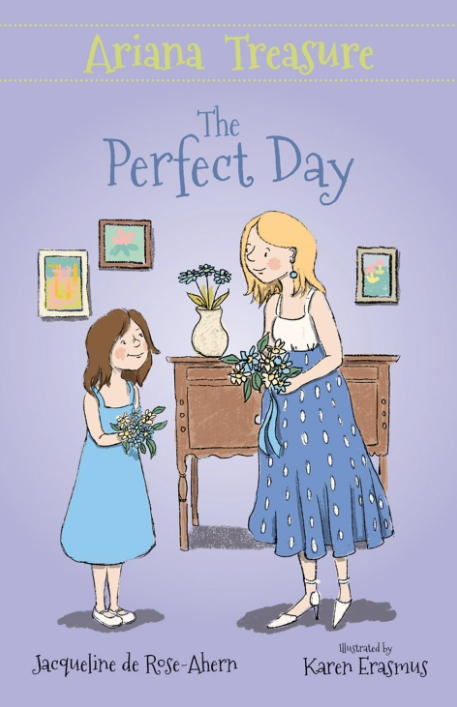
Reviewer: Brittany Kempaiah
The Perfect Day is a heartwarming story about taking deep breaths when things go wrong, finding solutions, and the power of embracing the messy moments as part of our best memories.
The Perfect Day begins as a story about what many women have “traditionally” wanted to be their perfect day—their wedding. As a woman who has had a wedding, it is easy to empathise with the story’s bride, as well as catch the excitement of the main character, Ariana, as she dreams about how perfect her Aunt’s wedding will be. But as an adult, it is easy to predict that the day won’t be perfect in the way anyone is imagining. Weddings seldom are.
What Ariana learns in the story is that anything worth experiencing is seldom perfect. In fact, our best stories and memories are usually about overcoming the hurdles life throws at us to find the moments that have been made beautiful by the things we had to go through to be there.
The Perfect Day is a great book for children between 4–7, or for our little readers who are still a bit reluctant around books. Short and engaging, it is hard not to get swept up in Ariana’s infectious enthusiasm or be soothed by her always stoic and dependable mother, who fixes everything in the way children think their mums can. The sweet illustrations littered throughout the book are a wonderful way to encourage children to engage with the story as a jumping-off point for their imaginations. These illustrations also act as brain breaks for new readers by breaking up the text with images that cause them to pause and think.
There is a beautiful line towards the end of the book that truly sums up the heart of this charming yet simple story: “As long as I have you and your mum, my days will always be perfect.” And isn’t that exactly how we feel about the little people in our lives? Isn’t that what we hope they always keep in mind—that life will get messy and unexpected, but our worlds and our moments are always better just for having them in them. The Perfect Day exemplifies that message.
Loved reading about The Perfect Day? Imagine the impact of helping a child discover their first favourite book.
By supporting Booktober, you’re helping the next generation in Western Sydney and regional NSW find their voice - and maybe even write the books you’ll be reading in the future.
Donate today at booktober.org.au/donate
Or Support a Bookworm like Brittany at booktober.org.au/users/brittany-kempaiah
Reviewer’s bio:

Brittany is a writer, poet, and English teacher from Campbelltown and one of the 2021 recipients of the West Words Emerging Writers Fellowship. Having worked as a journalist, Brittany believes that being from Western Sydney gives writers a unique perspective on life and storytelling. A passionate advocate for Western Sydney voices, she is currently working on a project telling the story of her life in Western Sydney, mental health and becoming a mother.
